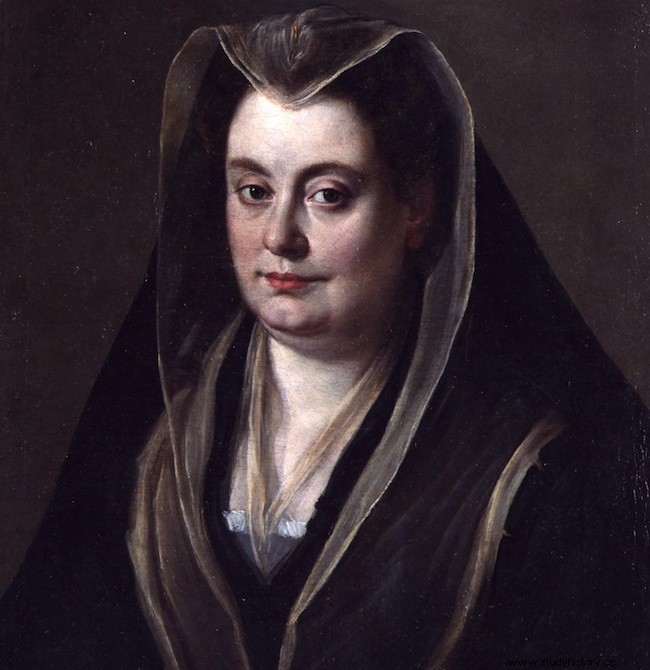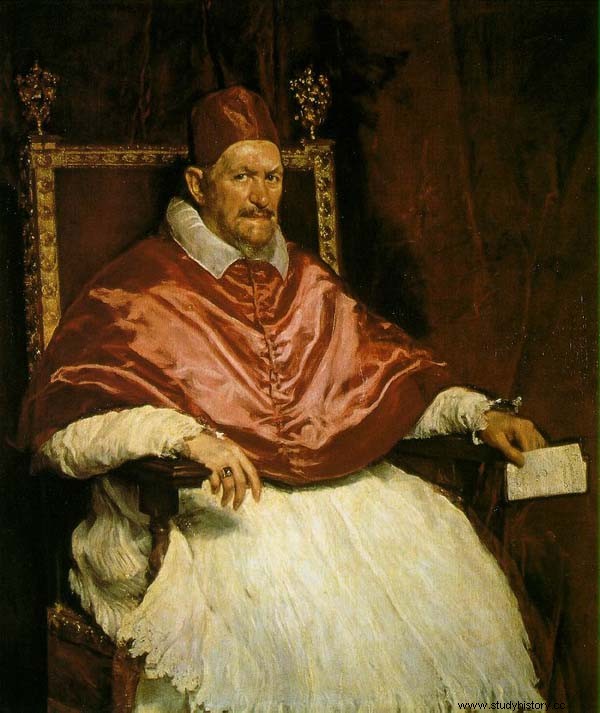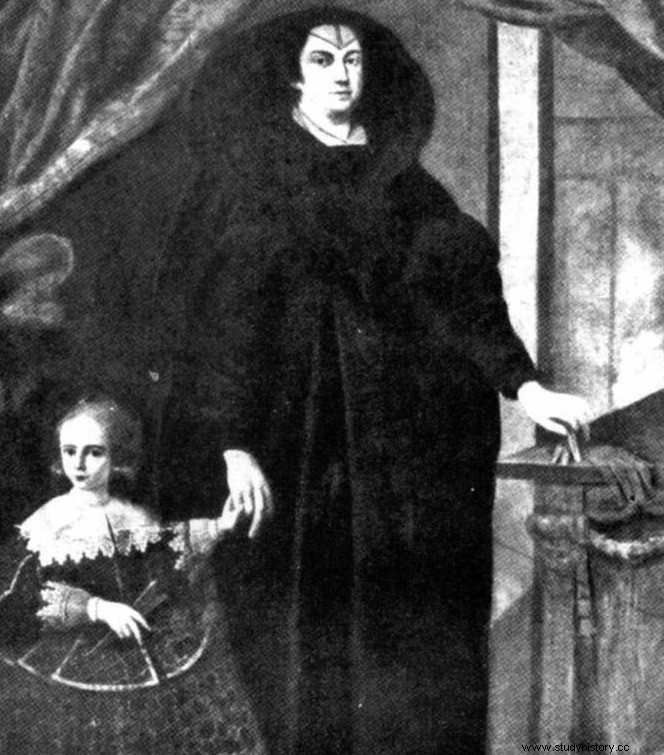Olimpia Maidalchini she was born in Viterbo in 1594. From a very young age, she began to be rebellious with the society in which she lived, in which others decided the future of women. Her family, wealthy and not rich, decided that her future would go through serving the Lord… she would be a nun. From the moment she entered the convent as a novice, she took control of her destiny and marked out the path to follow:leave the convent and get money and social position. In the convent, she accused her confessor of making indecent proposals to her that, although solemnly false, served to get her out of there.

Olimpia Maidalchini
Taking advantage of her acting skills, her beauty and the magnetism she caused among men, she knew how to trick Paolo Pini , a very rich, powerful man… and very old. They got married and the good gentleman had the courtesy to die at the age of three, leaving the poor widow a considerable fortune. The next goal on her list was to be related to some illustrious family name and achieve a good social position. And she was lucky, so to speak, that she crossed her path Pamphilio Pamphili , member of a noble family of Umbria installed in Rome. There were two more details that made Pamphilio the perfect candidate:he was 30 years older than Olimpia and had a cardinal brother, Giovanni Battista Pamphili . They got married and, like her first husband, Pamphilio had the detail of dying soon – What details were her husbands! – This time, leaving a son, Camillo . Olympias had achieved money and social position, now she could dedicate herself to the contemplative life and to enjoy earthly pleasures. But, along the way, an unthinkable goal arose… Since her marriage to Pamphilio, the relationship with her brother-in-law Giovanni, nuncio in Madrid, had become closer and they had become very good friends –the pink press of the time spoke even that they were lovers – The good position that Giovanni had within the Church and the money from Olympia, served for Giovanni to be named Pope in 1644 as Innocent X .

"Portrait of Innocent X" (1650) by Diego Velázquez
Cardinal Mazarin , prime minister of France and worthy successor of the Machiavellian Richelieu, decided to introduce spies in Rome to control the movements of Innocent X and his possible favoritism with Spain -remember that he was nuncio in Madrid-. Despite being a cardinal, Mazarin always put the interests of France first. But Olimpia, who was smarter than hunger, saw the move and suggested to the Pope the creation of an "express cleaning" service... the Black Order . This secret organization, at the service of Olympia more than the Pope, had the mission of eliminating French spies, for which it used a select group chosen for their absolute fidelity and for their art in handling certain sharp objects. His emblem was the figure of a woman, Olympias, carrying a cross in one hand and a sword in the other (to God praying and with the mallet giving). When they finished their work they left their stamp:a black cloth with two red stripes. Given the good results that this group of assassins gave, they decided to expand their work to other enemies of the Church.
The throne of San Pedro was occupied by a kind of marriage, in which he is the one who says he wears the pants, and he makes it noticeable outside the home. But that when he gets home from his mouth it only comes out: yes, honey; whatever you say, darling… Logically, the first measure was to name a cardinal nephew, the son that Olimpia had had with Pamphilio and, therefore, the nephew of Innocent X –the tabloid press returned to the charge, and said that Camilo was his son -. Innocent dealt with international affairs and Olympia with matters of home and finances. Proof of how good an administrator she was were the large profits obtained from the network she created to assist the multitude of pilgrims who attended the Jubilee of 1650 and, likewise, from the donations received for the recently created Institute for Mourning Widows . As a reward, her brother-in-law named her Princess of San Martino al Cimino (Viterbo) and feudatory of various localities.

The Pope fell ill and for several weeks before he died, Olympias took the reins. During this time, he did and undid as he pleased until Innocent X passed away in 1655. At that moment, knowing that his days of wine and roses were over, he abandoned the body of his brother-in-law, which was found several hours later, and laid earth in the middle. Of course, taking everything she could.
When I talk about tabloids in this story, as a symbol of gossip and criticism of public figures, I am referring to the pamphlets . The Roman people expressed their witty criticism by putting the texts, written on paper, in a statue called Pasquino -hence the origin of the term pasquín-. Later, this practice was extended to other statues and the group of all of them is called talking statues of Rome . Criticism of Olympia, the Dona of Rome , were of the style:
Once pious, now impious.
Dona is damage, Olimpia Maidalchini is Dona, damage and ruin
The painting «Portrait of Innocent X » (1650) painted by Diego Velázquez It also has its own story of it.
In 1649, Philip IV, King of Spain, sent the painter Diego Velázquez to the Italian peninsula for the second time to buy different works of art, including some by Tintoretto or Veronese. Taking advantage of the occasion, Innocent X commissioned the brilliant painter to paint a portrait of himself and another with his sister-in-law. When he finished the work and showed it to the Pope, he said:
Troppo vero (Too real)
The Pope showed his admiration for the realism of the work and, with a certain sarcasm, reproached him for not having given it a hand of photoshop. In recognition of his work, he presented her with a gold medal and chain. From the level of realism, almost photographic, we have the anecdote of a cardinal who, together with a group of clerics, approached the room where they thought the Pontiff was. He looked through the ajar door and said:
Lower your voice, for his saintliness seems to be resting
What he had seen was the painting of Inocencio X. By the way, the Velázquez painting was one of the things that Olimpia took from her and hers… disappeared. Her enemies could have used it against her.
